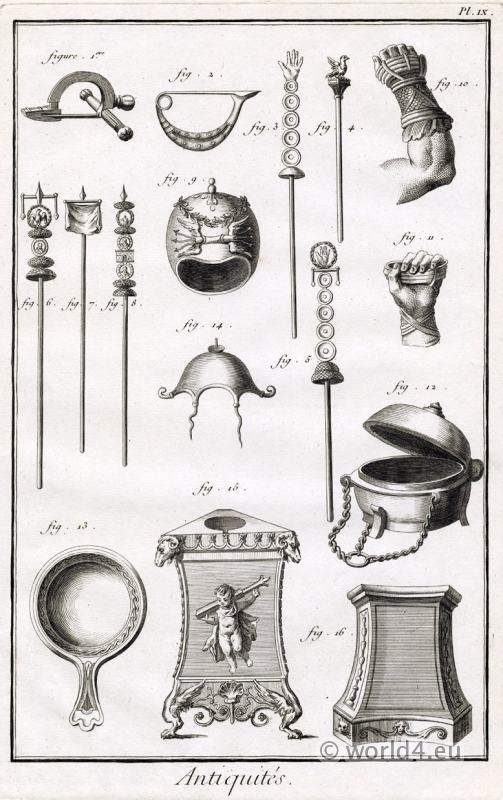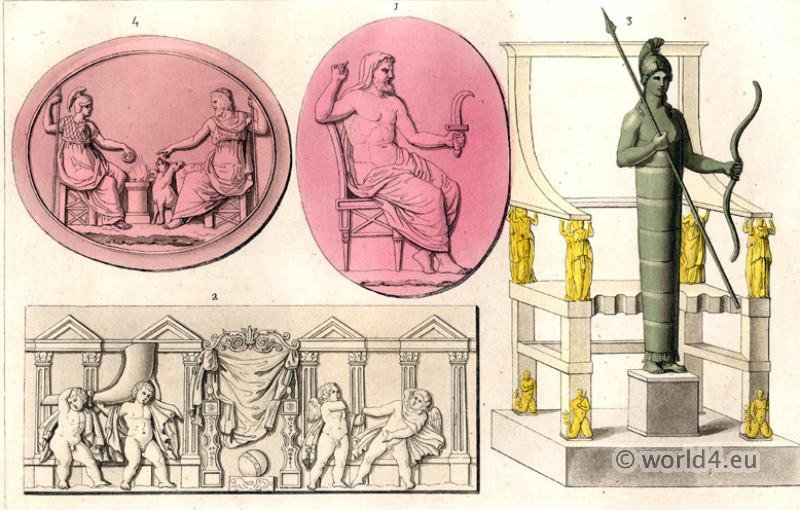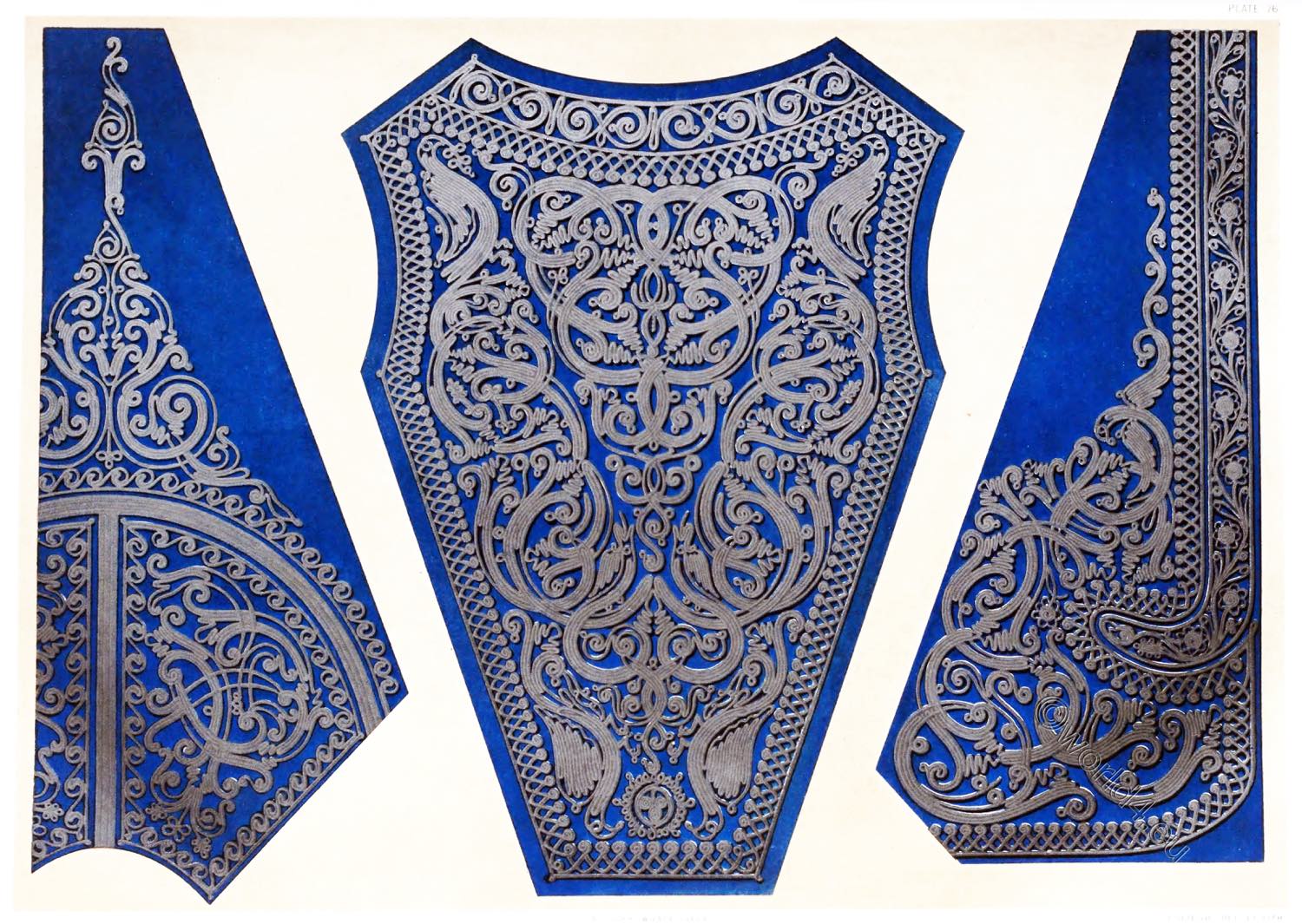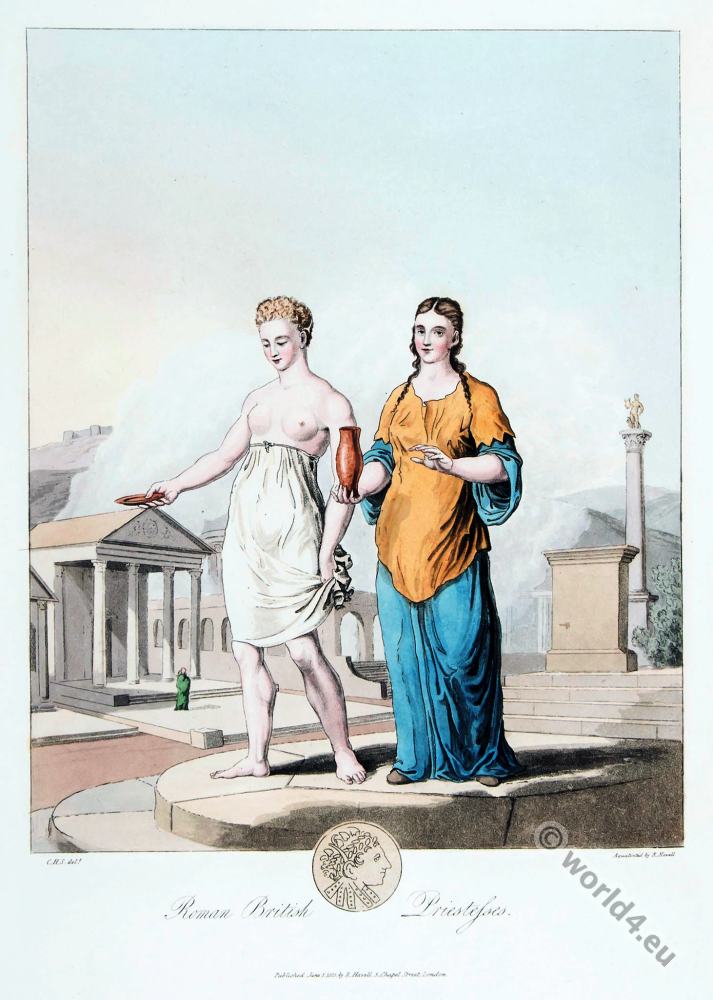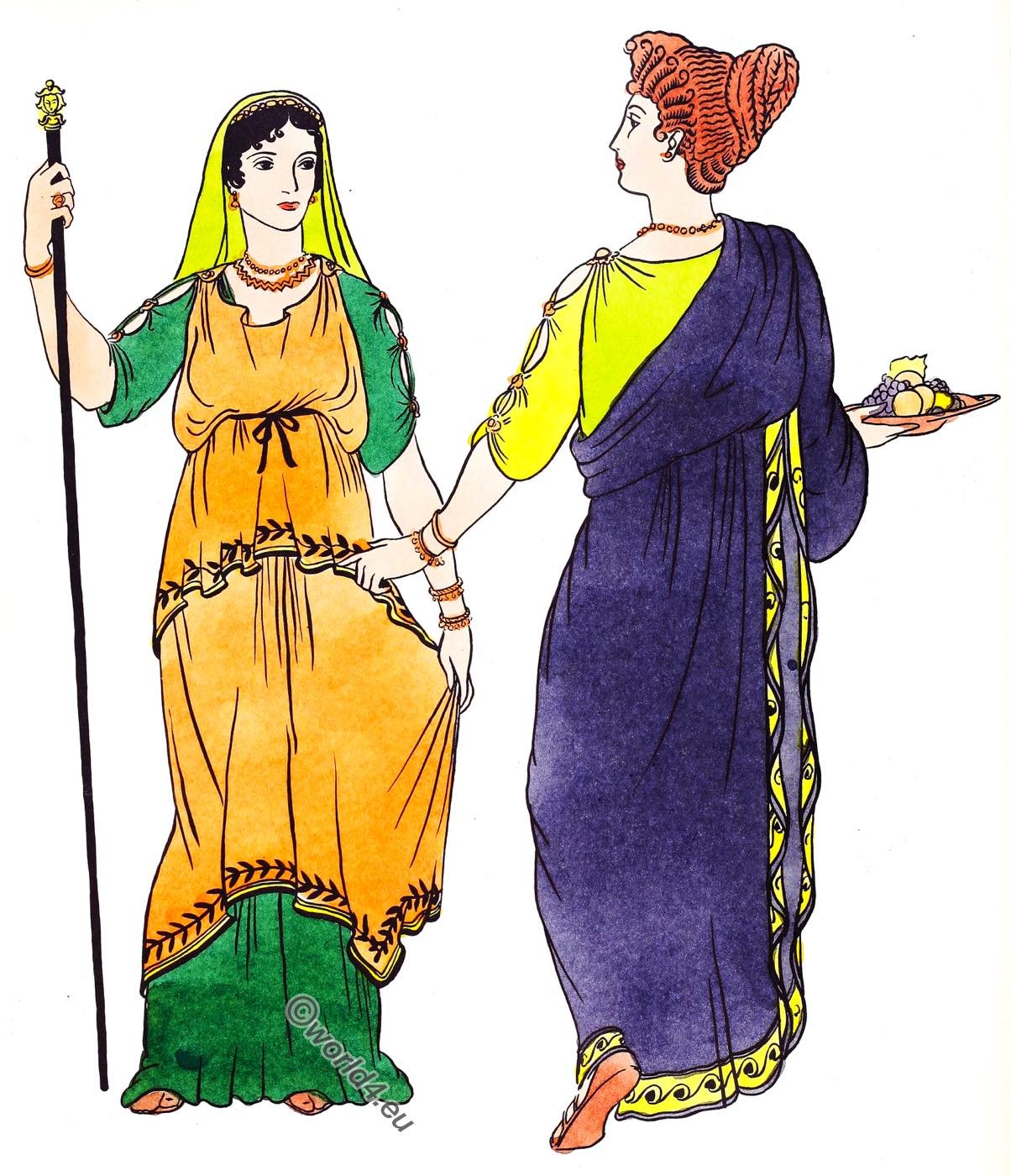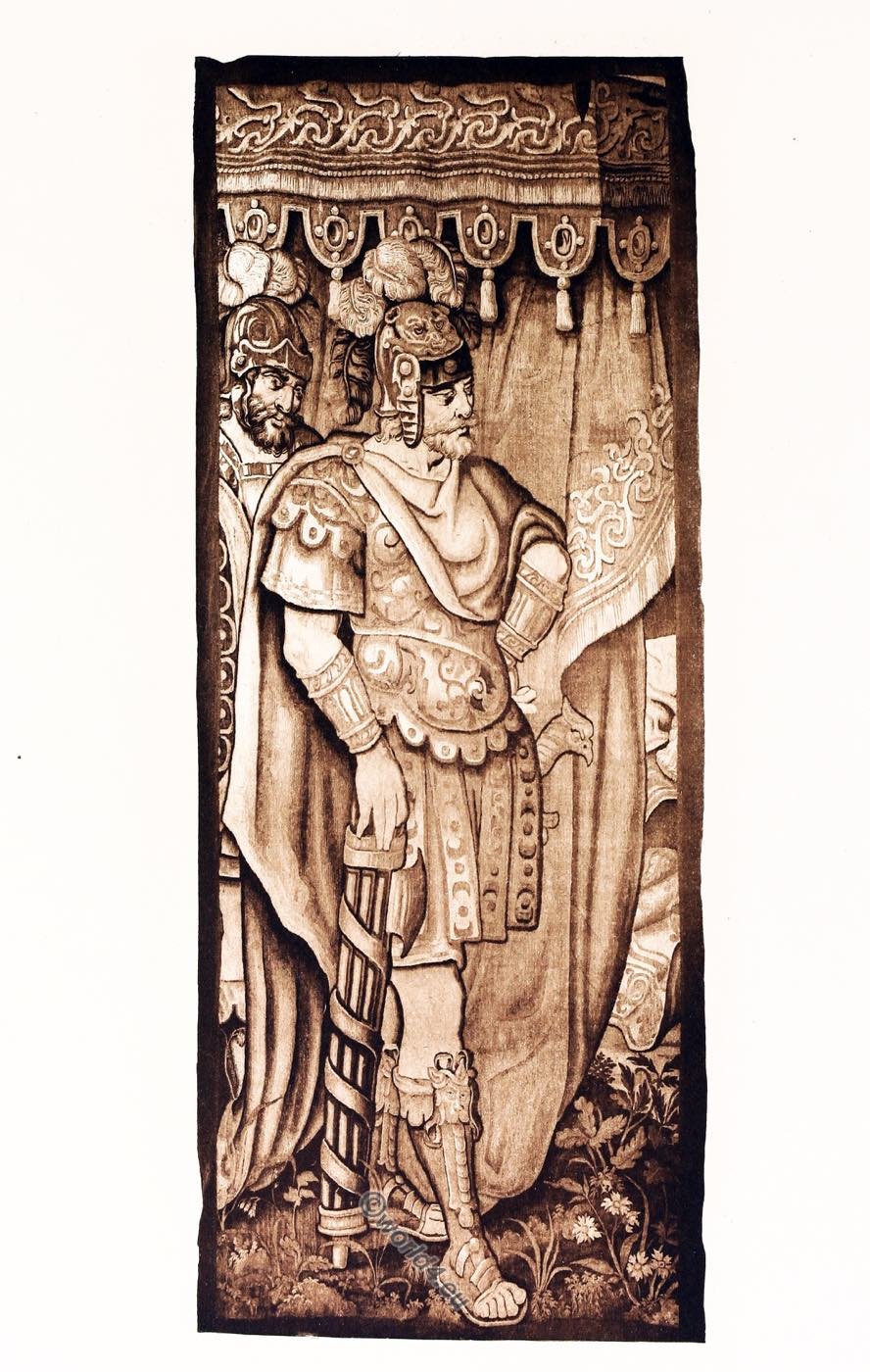
THE LICTOR PANEL
Height, 8 ft., 9 in. Width, 3 ft., 4 in.
THE subject of one of the large pieces of the Paulus Emilius series, of which mention is made in a previous description, represented that general entreating King Perseus to rise. This tapestry was originally one of a series of four, illustrating events in the life of a Roman general. They were woven in Flanders during the third quarter of the XVII century, and were impressive specimens of the productions of the Flemish looms of that period. The other three are no longer in existence.
It showed the Roman hero clad in a sumptuous robe stepping forth from his tent, with both hands outstretched towards Perseus, who knelt at his feet. Lictors and armed Roman soldiers stood around, and their tents were seen in the distance. The illustration shows a fragment of this tapestry and represents a stately Roman lictor in a rich costume, with his attendant just behind him. He wears a superb helmet with nodding plumes, and his strong athletic figure is clothed in the traditional Roman costume, the prevailing color of which is dull yellow. A mantle of greenish blue is fastened with a jeweled clasp on his right shoulder and falls behind him to the ground. His right hand rests upon his bundle of fascis. In the tapestry he stood quietly observant and vigilant, by the side of his general’s tent, ready to act in his defense if necessary. The richly embroidered green velvet hangings of the royal tent form an admirable background for his imposing figure.
The fasces (Latin fascis, is m.: bundle, usually plural fasces) are several rods in a bundle, in which an axe is inserted. In ancient times, fasces were the official symbol of the highest rulers among the Etruscans and later in the Roman Empire. The bundles of rods were carried before them by their ushers (lictors), which is why they are also called lictor bundles. In more recent times, the symbol has been used in states that wish to establish a link with the Roman Empire, such as the United States of America and France, but fascist Italy also used this symbol of power. The hatchet stood as a symbol for the death penalty, which could be ordered by the officials.
The Paulus Emilius series, as previously stated, was woven in the third quarter of the XVII century.
Barberini Collection. Ffoulke Collection, 1889.
Source: The Ffoulke collection of tapestries by Charles M. Ffoulke. New York: Privately printed, 1913.
Related
Discover more from World4 Costume Culture History
Subscribe to get the latest posts sent to your email.


